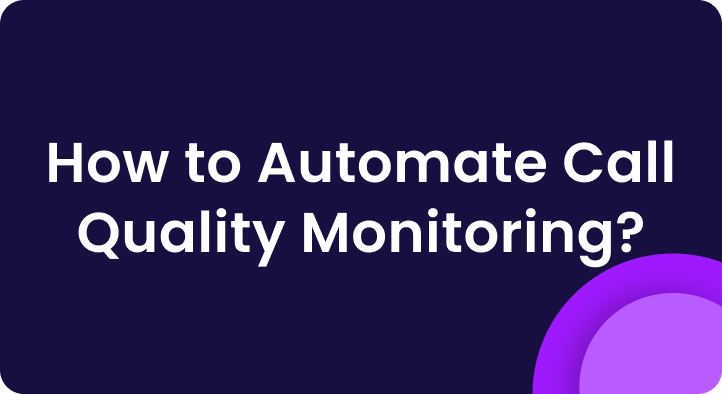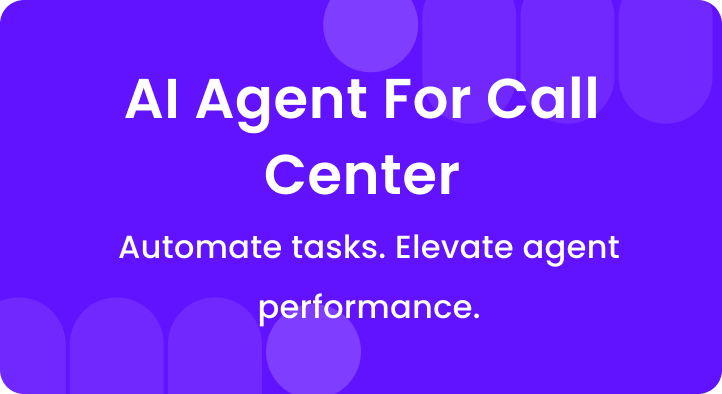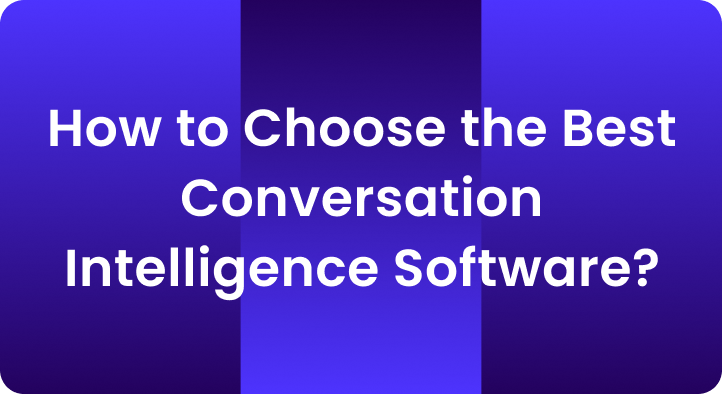Traditional agent scorecards are often created manually, a QA analyst listens to a few calls, checks a list of behaviors, and fills out a form.
It’s slow, subjective, and covers only a small portion of interactions.
AI changes all of that.
With the right tools, AI can analyze 100% of customer conversations, automatically score key behaviors, and generate consistent, data-backed scorecards in minutes, not days.
Let’s break down how that actually works, step by step.
Step 1: Transcribing the interaction
The process starts with speech recognition.
AI listens to the call (or reads a chat/email) and transcribes the full conversation in real time or shortly after.
Modern tools use advanced models that can handle accents, poor audio quality, and interruptions with surprising accuracy.
Why it matters: Transcription turns voice into data, and gives AI something it can analyze.
Step 2: Structuring the conversation
Once the transcript is ready, AI identifies key elements of the call, such as:
- Who spoke when (agent vs. customer)
- Call stages (greeting, problem, resolution, closing)
- Time spent on each section
- Key phrases, keywords, and intents
- Sentiment or emotion in each turn
This gives structure to what would otherwise be a wall of text, and helps AI understand what actually happened in the conversation.
Step 3: Mapping behaviors to scorecard criteria
Next, the system compares what happened in the conversation against your custom QA scorecard.
For example:
- Did the agent greet the customer properly?
- Did they verify the account details?
- Was the correct upsell or script used?
- Did they show empathy or active listening?
- Did they avoid restricted phrases or compliance risks?
Each of these behaviors is tied to a scoring rule. AI uses a mix of keyword detection, natural language understanding, and pattern recognition to determine whether the agent met the criteria.
Step 4: Auto-scoring each interaction
Once the criteria are mapped, the system automatically scores each behavior. This might be:
- Yes/No
- Pass/Fail
- 1–5 rating
- Weighted percentage (based on scorecard setup)
If your scorecard includes custom weightage (e.g., compliance = 40%, tone = 20%), AI applies those rules to generate a final score.
Example: The agent followed 9 out of 10 steps, missed the verification, and used the wrong closing script. Final QA score: 84%
This happens within seconds of the call ending.
Step 5: Surfacing insights
AI doesn’t stop at just scoring. It can also:
- Highlight repeated mistakes across multiple calls
- Show trending issues at the team level
- Flag calls that need human review (e.g., customer anger or policy violation)
- Track agent improvement over time
- Suggest coaching actions based on patterns
So instead of a static score, you get actionable insights you can use to coach better and faster.
What parts of the scorecard can be AI-scored?
AI works best on criteria that are objective and repeatable.
For example:
| Can be AI-scored | Needs human input |
|---|---|
| Script adherence | Tone nuance or sarcasm |
| Mandatory disclaimers | Judgment-based coaching |
| Keyword usage | Complex emotional context |
| Handle time | Quality of resolution |
| Interruption patterns | Empathy (in some cases) |
How accurate is AI scoring?
Most modern QA tools report AI scoring accuracy between 85–95%, especially on binary items like “Was the customer’s name mentioned?” or “Was the payment disclaimer stated?”
But like any system, AI needs:
- Clear criteria
- Clean transcripts
- Regular calibration (especially in high-compliance environments)
That’s why many teams use AI + human-in-the-loop, where AI scores the bulk, and QA reviewers spot-check or deep-dive into edge cases.
What are the benefits of AI-generated scorecards?
Here’s what QA teams consistently report after switching to AI scoring:
1. Full coverage
Analyze 100% of calls, not just a handful.
2. Faster feedback
Agents get coaching within hours, not weeks.
3. More consistent scoring
No more “QA bias” based on who reviewed the call.
4. Better coaching opportunities
Trends and problem areas are easier to spot.
5. Time saved
Analysts spend less time listening and more time improving the process.
According to a 2024 report from CCW Digital, teams using AI for QA reduced their manual review time by 63% on average, while increasing agent performance by 22% over six months.
Is this replacing human QA teams?
Not at all. It’s redefining their role.
Instead of just checking boxes, QA managers can:
- Focus on coaching conversations
- Refine scorecard logic over time
- Investigate anomalies
- Align QA with business outcomes
AI handles the repetitive part. Humans handle the smart part.



